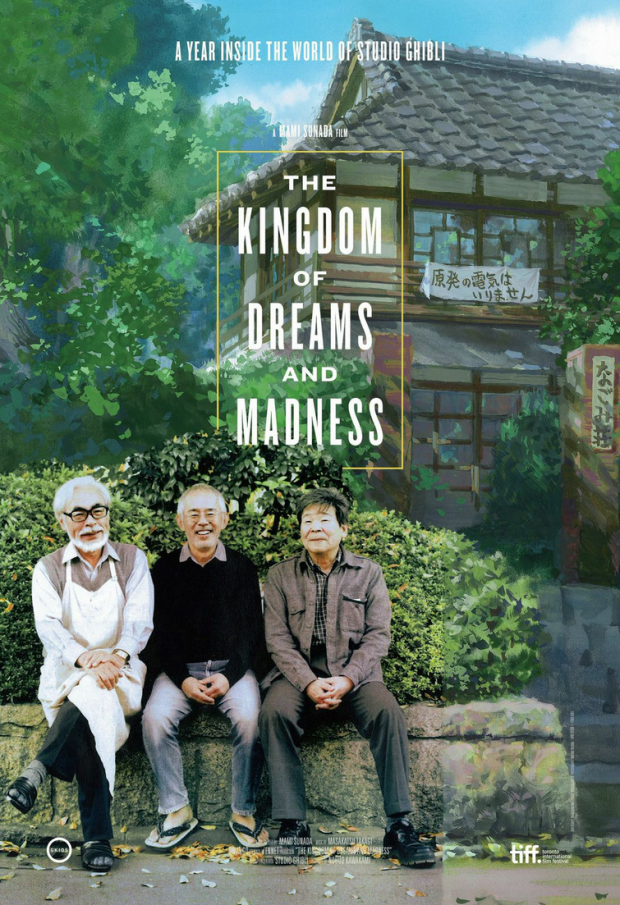ROBERT DYLAN FIELDS WRITES – When most people hear the word “animation,” the first thing that comes to mind are often animated works from figures such as Walt Disney. A lot of the time, however, they do not step back and consider what the word animation really means. The word “animation” is derived from a Latin term that roughly means “the act of bringing to life.” Animation is thus more than watching a bunch of drawn caricatures of people and animals moving about on screen, but rather witnessing actual pieces of painstakingly hand-drawn or computer-generated art coming to life right before your eyes. I can say with certainty that no animation studio on Earth truly understands and appreciates what animation means more than the masterminds of Studio Ghibli – Japan’s most influential animation studio of all time, and arguably the most influential animated filmmaking studio in history.
It is thanks to the leadership of filmmakers Hayao Miyazaki and Isao Takahata, along with producer Toshio Suzuki, that the world has not only been exposed to the level of ingenuity crafted in Japanese anime, but the level of potential that animation as a whole has as a medium for storytelling. This is made especially clear through Mami Sunada’s documentary The Kingdom of Dreams and Madness, which gives the viewer a grand tour of Studio Ghibli and its gifted animators hard at work. This documentary follows Miyazaki as it chronicles the making of his and Takahata’s The Wind Rises and The Tale of the Princess Kaguya respectively.
I was surprised to find how open Miyazaki was with Sunada, as throughout the duration of the film we learn many things about Miyazaki’s everyday behavior and philosophy. This includes how he punctually works from 11:00AM to 9:00PM sharp every day, as well as how he creates all of the hand-drawn storyboards of his movies before actually taking the time to write a script. We are also given clear answers on the ideas that went into the making of his final film, including how his self-acknowledged hypocrisy in hating war collides with his fascination with the craftsmanship of the Zero fighter plane.
We also learn how the character of Jiro Horikoshi, the man who created the plane, was inspired by Miyazaki’s father Katsuji, an aeronautical engineer during WWII. When Miyazaki receives a touching letter from a man who was orphaned as a boy, the audience learns that Katsuji had helped the young man in a manner similar to a scene depicted in The Wind Rises. Miyazaki is so warm and open throughout the film that the viewer almost feels that they are in the same room with the master animator. Above all else, Miyazaki truly shows the level of creativity that he exhibits in each of his animated works simply by gazing upon a scenery of rooftops in his hometown:
“See that house with all the ivy on it? From that rooftop, what if you leapt onto the next rooftop, dashed over that blue and green wall, jumped and climbed up the pipe, ran across the roof and jumped onto the next? You can in animation. If you can walk the cable you can see the other side. When you look from above, so many things reveal themselves to you. Maybe race along the concrete wall. Suddenly, there in your humdrum town is a magical movie. Isn’t it fun to see things that way? Feels like you can go somewhere far beyond. Maybe you can.”
This speech it is punctuated by clips from many of his feature films, each perfectly matched with the master’s vivid imagination. This scene made it clear to me how much of a genius Miyazaki truly is. The Kingdom of Dreams and Madness is a bittersweet film that celebrates the life and contributions of Miyazaki and Ghibli, along with the mourning of what could very well be the final days of Studio Ghibli.
There will never be another Hayao Miyazaki, but that does not mean that hand-drawn animation has no future. As Miyazaki himself stated in an interview, it will continue to exist as long as passionate hand-drawn animators still exist. “Both pencils and computers are tools to make our stories. Even though the pencil might be an old tool, it is still a tool, and we can still use it. So as long as the tool can be used, I think it will be a way to draw animation.” The Kingdom of Dreams and Madness is thus not only a wonderful documentary of the crafting of Japanese anime that is a must see for Ghibli fans, but is more importantly a wonderful depiction of the crafting of animation that anyone with an eye for beauty would absolutely adore.
The Kingdom of Dreams and Madness is currently available on Netflix.

